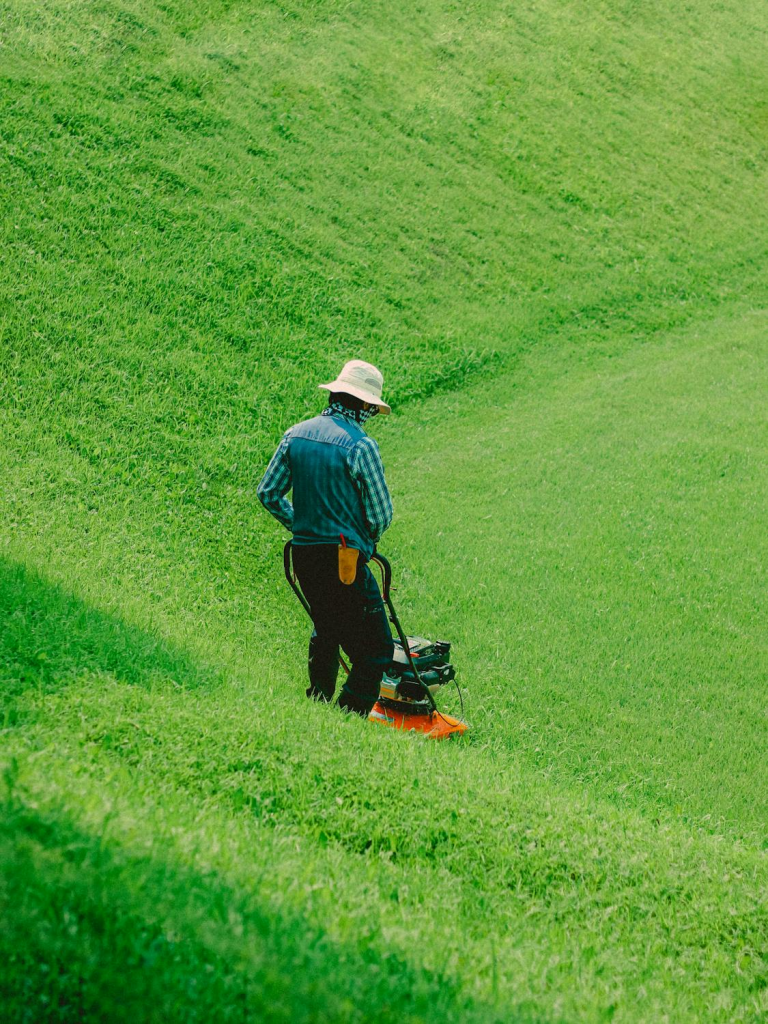Mowing the lawn might seem like a simple task, but when done incorrectly, it can damage your grass, hinder healthy growth, and even turn your once-beautiful lawn into an unsightly patch of dry or brown grass. In Australia, where lawns are a staple of outdoor living, it’s essential to understand the best techniques for mowing to ensure a vibrant and healthy lawn year-round.

This guide will provide practical advice on the best mowing practices, from choosing the right mower to understanding the optimal height for different grass types. It will also delve into the key factors that contribute to a beautiful lawn, such as timing, mowing patterns, and blade care.
Click My Review Here For More Details
The Best Techniques For Mowing The Lawn: A Comprehensive Guide
Choosing The Right Mower For Your Lawn
Before you even begin mowing, selecting the appropriate mower for your lawn is crucial. The mower you choose should match the size, terrain, and type of grass in your yard. Here are a few considerations:
A. Push Mowers (Manual Or Electric)
Push mowers are ideal for small to medium-sized lawns. Manual push mowers are great for those who prefer an eco-friendly option, as they require no fuel or electricity. Electric push mowers, both corded and battery-powered, offer more convenience and a bit more power than manual models.
B. Ride-On Mowers
For larger lawns (over 1,500 square metres), ride-on mowers can save a lot of time and effort. They come with a variety of attachments and accessories, making them versatile for both mowing and lawn maintenance.
C. Reel Mowers
If you’re looking for a quieter, more traditional method of mowing, a reel mower is an excellent option. These are hand-powered, offering a simple and eco-friendly approach to lawn care. However, reel mowers may not be suitable for larger or uneven lawns.
D. Zero-Turn Mowers
Zero-turn mowers are highly efficient for large, flat lawns thanks to their ability to turn in place and navigate tight spaces. If you have a substantial lawn with lots of obstacles like trees or flower beds, a zero-turn mower can make the job much quicker.
Understanding The Ideal Mowing Height
Different types of grass thrive at different mowing heights. Mowing your lawn at the correct height ensures that your grass remains healthy and can retain moisture, resist disease, and grow strong roots. Here’s an overview of ideal grass heights for popular types of grass found in Australian lawns:
A. Couch Grass (Cynodon Dactylon)
Commonly found in warm climates, Couch grass should be mowed to a height of about 25-40 mm. Mowing too short can stress the grass, leading to weak growth and an increased risk of weed invasion.
B. Kikuyu Grass (Pennisetum clandestinum)
Kikuyu grass is known for its aggressive growth and adaptability. It should be kept at a height of 25-40 mm. When mowing, be sure not to cut too much at once, as this can cause stress to the lawn.
C. Buffalo Grass (Stenotaphrum Secundatum)
Buffalo grass, which is popular for its shade tolerance, should be maintained at a height of 40-50 mm. This height allows the grass to form a dense, lush carpet, which is key to preventing weed growth.
D. Fescue Grass (Festuca Spp.)
Fescue grass is suitable for cooler climates and should be mowed to about 50-70 mm. Maintaining this height ensures that the lawn retains moisture, particularly in the hotter Australian summer months.
E. Zoysia Grass (Zoysia Japonica)
Zoysia grass, known for its drought resistance and ability to handle high traffic, grows well at a height of 30-50 mm. Mowing too low can stunt growth while mowing too high can lead to a thatchy lawn.
Mowing Frequency
The frequency with which you mow your lawn depends on the season, the growth rate of your grass, and the weather conditions. During the warmer months, you may need to mow more frequently, while in cooler seasons, grass growth tends to slow down.
A. During Spring And Summer
In the warmer months, grass grows rapidly, and you may need to mow once a week or every 10 days. If you allow your grass to grow too long between mowing sessions, you’ll have to cut more off, which can stress the lawn and cause scalping.
B. During Autumn And Winter
During the cooler months, grass growth slows, and you can typically mow once every two weeks or as needed. In some areas of Australia with milder winters, lawns may continue growing slowly, but mowing frequency should be reduced.
C. Adjusting For Growth Conditions
Keep an eye on how fast your lawn grows, and adjust the mowing schedule accordingly. Heavy rainfall, for example, can accelerate growth, while a dry spell may cause the grass to grow more slowly.
Mowing Patterns
Changing your mowing pattern regularly is important for the health of your lawn. If you always mow in the same direction, it can cause the grass to grow in one direction, leading to a uniform appearance but weaker growth. Rotating your mowing direction helps to encourage upright growth, improve grass density, and reduce compaction.
A. Vertical And Horizontal Mowing
Consider alternating between vertical and horizontal mowing patterns. If your lawn is particularly large, you may also want to mow diagonally from time to time. This technique prevents the lawn from becoming overly compacted in one direction.
B. Mowing In Stripes
While mowing in stripes is more about aesthetics than function, it can give your lawn a polished, well-maintained look. Achieving stripes requires alternating between mowing in different directions. This pattern enhances the natural light reflection off the grass, creating a striking visual effect.
Mowing Techniques: Cutting And Blade Care
There are a few important techniques you should follow when mowing, both to enhance the health of your grass and prolong the life of your mower.
A. Never Cut More Than One-Third Of The Grass Height
A common rule of thumb is to never remove more than one-third of the grass height in a single mowing session. Cutting more than this can shock the grass, leading to stress and even long-term damage. If the grass has grown too long between mowings, it’s better to mow in two stages, cutting a small amount each time.
B. Sharp Mower Blades
Using sharp blades is essential for a clean cut. Dull blades tear the grass, leaving ragged edges that are more susceptible to disease and pests. It’s advisable to sharpen your mower blades regularly to ensure a crisp, healthy cut.
C. Clean Your Mower After Each Use
Grass clippings and dirt can build up on your mower’s deck and blades, affecting its efficiency and longevity. After each use, clean your mower thoroughly, paying special attention to the underside of the deck, where clippings tend to accumulate.
D. Mowing When The Grass Is Dry
Mowing when the grass is wet can lead to uneven cutting and an increased risk of clumping. Wet grass also sticks to the mower deck and can cause blockages. It’s best to mow on a dry day, ideally in the morning or late afternoon, when the grass has dried but isn’t scorched by the sun.
Grass Clippings: To Bag Or Not To Bag?
There’s an ongoing debate about whether to bag grass clippings or leave them on the lawn. Both options have their pros and cons:
A. Leaving Clippings On The Lawn (Mulching)
If you’re using a mulching mower or a mower with a mulching function, leaving the clippings on the lawn can be beneficial. As the clippings decompose, they return valuable nutrients to the soil, helping to fertilise your lawn. Additionally, mulching helps retain moisture in the soil, especially during hot summer months.
B. Bagging Clippings
If your lawn is thick or if you’ve cut the grass too short, it’s often best to bag the clippings to avoid clumping. Excess clippings can smother the grass and promote the growth of thatch. Additionally, bagging allows for a cleaner appearance, particularly if you have a manicured lawn.
Timing Your Mowing
The timing of when you mow your lawn can have a significant impact on the health of your grass. Mowing during the hottest part of the day is not recommended, as the stress from heat can harm the lawn. Early morning or late afternoon, when the temperatures are cooler, is the ideal time to mow.
Maintaining Lawn Health Beyond Mowing
While mowing is an essential aspect of lawn care, there are other practices that contribute to a healthy and vibrant lawn. These include watering, fertilising, aerating, and controlling weeds and pests. A balanced approach to lawn care ensures that your grass remains strong, lush, and green throughout the year.
Conclusion
Mowing the lawn may seem like a mundane chore, but when done correctly, it can significantly improve the health and appearance of your outdoor space. By selecting the right mower, understanding the appropriate mowing height, adopting proper mowing techniques, and maintaining your equipment, you’ll have a beautiful lawn that thrives all year round.
Remember, mowing is just one part of lawn care, and a well-maintained lawn requires ongoing attention and care. With patience and consistent effort, you can enjoy a lush, green lawn that enhances your outdoor living experience in Australia.
Frequently Ask Question
How Often Should I Mow My Lawn?
The frequency of mowing depends on the type of grass and the growing season. In spring and summer, it’s generally recommended to mow once a week to keep the grass healthy and neat. During autumn and winter, you may mow less frequently, around every two weeks. It’s important to adjust the mowing schedule based on weather conditions and grass growth rates. Cutting too often can stress the lawn, while not mowing enough can lead to overgrowth.
What Is The Ideal Grass Height For Mowing?
The optimal grass height for mowing varies depending on the grass type, but typically, aim for a height of 30-50mm for most lawn varieties. Taller grass provides shade to the roots, helping the lawn retain moisture. Cutting too short can stress the grass and make it more susceptible to weeds and disease. Keep your mower blades sharp and set to the correct height for your grass type.
How Can I Achieve A Professional-Looking Lawn Cut?
To achieve a professional-looking cut, it’s important to mow in different directions each time. This prevents the grass from developing a grain and ensures even growth. Make sure your mower blades are sharp to avoid tearing the grass, which can lead to brown tips. After mowing, collect the clippings or use a mulching mower to return nutrients to the soil. Lastly, edge around garden beds and paths to give the lawn a clean, polished look.
